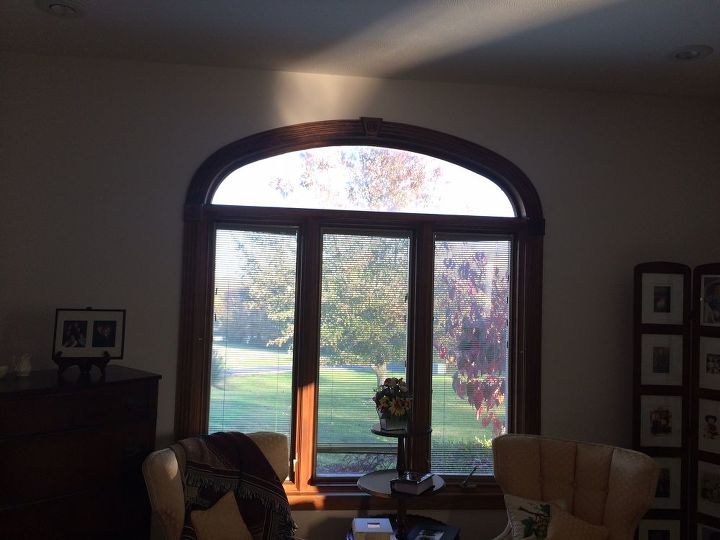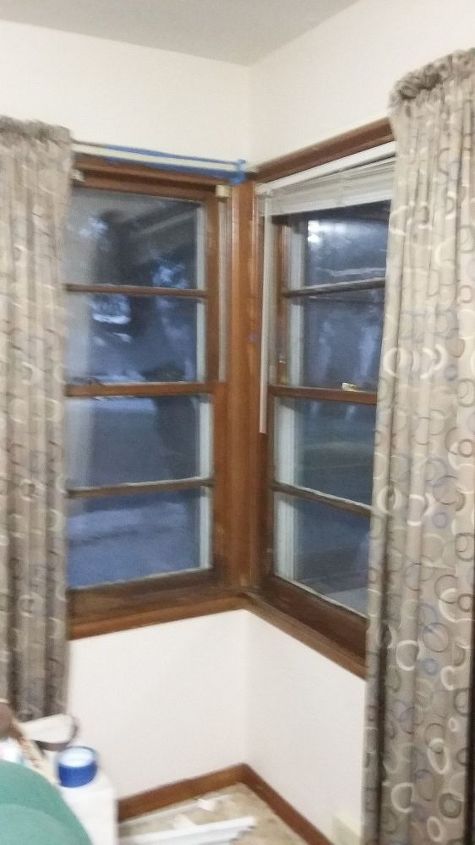How to patch screw holes in a metal front door
Related Discussions
How to get rid of mice?
We seem to have some unwelcome Mickeys and Minnies in our house. What is the best way to get rid of them?
How to remove popcorn ceiling with asbestos?
I want to remove my popcorn ceiling, but it has asbestos in it. How do I go about this safely?
How to caulk baseboard gaps?
How do I fill gaps at baseboard, should I caulk? If so, does anyone know how to caulk baseboards?
How to fix squeaky hardwood floors?
How do I fix squeaky hardwood floors?
Tips for updating or repairing Pella between the glass blinds?
Our 14 year old cord controlled blinds are all giving us trouble with raising and lowering and tilting. Many of the top mechanisms are coming unglued from the top. I ... See more
Brr! Drafty windows- how to cut the draft?
I have 3 sets of windows configured like this...very drafty, How to you winterize them? There is nothing in the corner to stick tape to. Thank you






Use auto body filler.
http://homeguides.sfgate.com/fill-holes-metal-door-37991.html
Two part epoxy putty like JB Weld or Locktite for metal/steel.
The following instructions were taken from http://homeguides.sfgate.com/fill-holes-metal-door-37991.html
How to Fill Holes in a Metal Door
Use auto body filler to patch metal doors. The procedure to fill holes in a metal door is similar to repairing wood doors. The difference is the type of filler that you use. You will have to use a bonding filler intended for metal to get this job done right. Auto body fillers are best for repairing metal doors because they are formulated to adhere to metal surfaces. Don't use wood filler for this repair, or you will spend more time repairing later.
1 Sand the area around the hole until you reach bare metal, using course-grit sandpaper. Use the corner of the sandpaper to remove paint from dents and crevices. Remove the sanding dust, using a wet or dry vacuum.
2 Apply liquid rust remover to any rusty areas. Remove the rust with a wire brush.
3 Clean the door thoroughly of dirt and oily residue, using a degreasing cleaner and a clean cloth, to ensure that the bonding material adheres to the metal.
4 Mix and blend the metal bonding filler with the hardener. Use a plastic putty knife, and follow the manufacturer's instructions.
5 Apply a smooth layer of filler to the hole with the putty knife. Overfill the hole to form a slight mound. Allow the filler to dry completely.
6 Sand and smooth the patch with a course-grit sanding block. Remove the sanding dust with a clean cloth. Apply more filler to recessed holes and allow it to dry completely. Sand the area again with the course-grit sanding block. Remove the sanding dust with a clean cloth.
7 Sand the patch again, but this time use a medium-grit sanding block. Remove the sanding dust with a clean cloth.
8 Apply rust-inhibiting primer to the patched area with a spray can. Allow the primer to dry completely and apply a second coat.
9 Dip a piece of 400-grit wet or dry sandpaper in water. Wrap the sandpaper around a rubber sanding block and sand the area smooth. Allow the metal to dry completely.
10 Apply two coats of rust-inhibiting paint to the patched area, or paint the entire doorto ensure a uniform paint finish.
Things You Will Need
*Course-grit sandpaper
*Wet-dry vacuum
*Liquid rust remover
*Wire brush
*Degreasing cleaner
*Clean cloths
*Metal bonding filler
*Plastic putty knife
*Course-grit sanding block
*Medium-grit sanding block
*Rust-inhibiting primer
*400-grit wet or dry sandpaper
*Rubber sanding block
*Rust-inhibiting paint
Tip
A small wood block can be used in place of a sanding block.
Warnings
*Ensure that the paint you are using complies with regulations on volatile organic compounds in your area.
*Solvent-based products are NOT VOC-compliant in all areas.
PJ Wiss's answer is the best I've seen on this topic, but if you only have a few small holes and they aren't in any sort of structural area I would use caulk and paint over them.